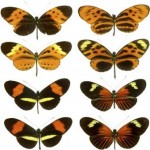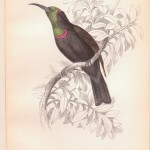Kinds Of Animals
There are many different kinds of animals in the world, and classification of these can be difficult if a researcher does not use a certain set of criteria for classification. Some are classified according to where they live (terrestrial or marine). Some animals are sorted according to their active periods (diurnal and nocturnal). The most fundamental way to classify the kinds of animals is to group them according to what they have in common.
Amphibians
According to evolutionary studies, amphibians are the kinds of animals with vertebrates that first made the change from marine life to terrestrial life. They are considered cold-blooded animals, and have unique circulatory and thermoregulatory systems. Amphibians can live off the water and off the land, with special analogical features that develop in response to different habitats. Amphibian lineages maintained their aquatic characteristics, for instance the webbed feet in frogs, as well as their significantly long water phase or the tadpole stage. As tadpoles, their physiology resembles that of fish, complete with gills and a planktivorous diet.
Birds
Birds are bipedal, warm blooded animals that can live off the land eating small critters, seeds, fish and fruits. Birds are the kinds of animals that create a feeding pattern according to their habitat. These kinds of animals can be found anywhere, from wetlands to deserts, to coastal areas. The common traits among bird types include the presence of feathers, a light yet sturdy skeletal system, a sharp beak, fast metabolism and egg-laying capacity.
Fish
Fishes are the kinds of animals with gills instead of lungs. The gills function like lungs do in land animals, and the exchange of air occurs in thread-like structures suffused with capillaries and blood vessels. Because of this significant variation from other animals, their physiology is also unique. They thrive in marine or fresh water habitats. Any creature that has no feet or arms, lives in water and has a backbone is classified as a fish, with few exceptions.
Invertebrates
Invertebrates are ubiquitous creatures that live in terrestrial and aquatic environments. The classification of invertebrates is complex because from a taxonomic point of view, any animal without a vertebral column is included in this group. Some of the most familiar invertebrates are insects and worms, crabs and snails, and octopus and starfish. Among the kinds of animals on the planet, this group is the most diverse.
Mammals
Mammals are the most familiar kinds of animals because they include dogs, cats and other animals usually kept as house pets. These are warm-blooded animals with a well-developed neocortex and mammary glands. Mammals can be as small as fruit bats and as large as elephants. Not all mammals live on land; in fact, the biggest mammal lives in the ocean (whales).
Reptiles
Reptiles are cold-blooded amniotes that include snakes, iguanas, crocodiles and turtles. Instead of hide, fur or hair that covers the bodies of other animals, reptiles have scales that protect their bodies from extreme heat and cold. While there are known reptiles in colder regions, the warm weather attract these animals. They are most abundant in the tropics.






